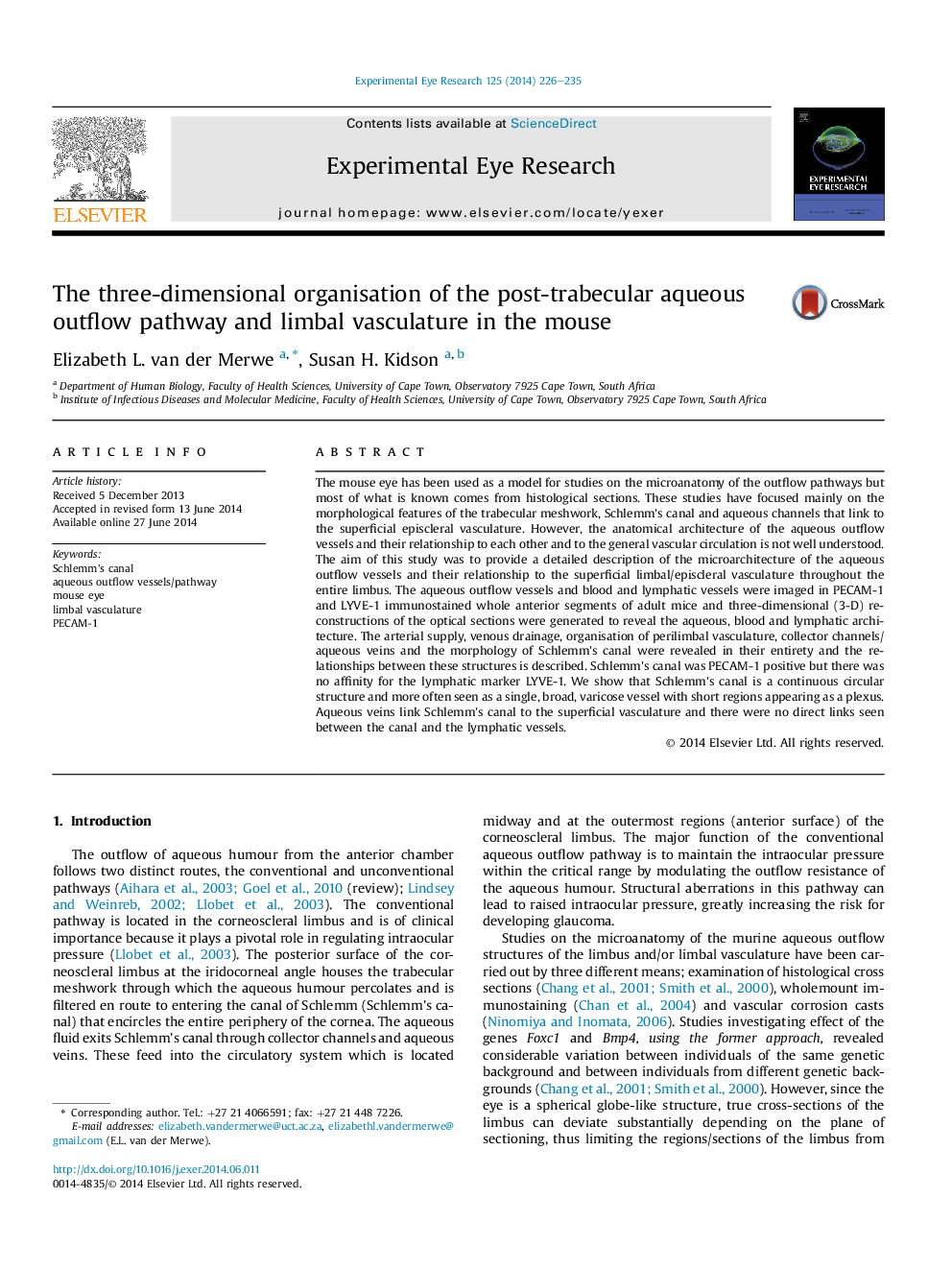| کد مقاله | کد نشریه | سال انتشار | مقاله انگلیسی | نسخه تمام متن |
|---|---|---|---|---|
| 6196974 | 1602597 | 2014 | 10 صفحه PDF | دانلود رایگان |
- Murine PECAM-1 immunostained corneoscleral wholemounts imaged in three dimensions.
- The entire limbal angioarchitecture, aqueous vessels and Schlemm's canal revealed.
- Detailed morphology of Schlemm's canal and limbal vessels in 3-D images described.
- Relationships between aqueous vessels and limbal blood vessels shown.
- Differences in limbal vessels between ICR and C57Bl/6x129 mouse strains shown.
The mouse eye has been used as a model for studies on the microanatomy of the outflow pathways but most of what is known comes from histological sections. These studies have focused mainly on the morphological features of the trabecular meshwork, Schlemm's canal and aqueous channels that link to the superficial episcleral vasculature. However, the anatomical architecture of the aqueous outflow vessels and their relationship to each other and to the general vascular circulation is not well understood. The aim of this study was to provide a detailed description of the microarchitecture of the aqueous outflow vessels and their relationship to the superficial limbal/episcleral vasculature throughout the entire limbus. The aqueous outflow vessels and blood and lymphatic vessels were imaged in PECAM-1 and LYVE-1 immunostained whole anterior segments of adult mice and three-dimensional (3-D) reconstructions of the optical sections were generated to reveal the aqueous, blood and lymphatic architecture. The arterial supply, venous drainage, organisation of perilimbal vasculature, collector channels/aqueous veins and the morphology of Schlemm's canal were revealed in their entirety and the relationships between these structures is described. Schlemm's canal was PECAM-1 positive but there was no affinity for the lymphatic marker LYVE-1. We show that Schlemm's canal is a continuous circular structure and more often seen as a single, broad, varicose vessel with short regions appearing as a plexus. Aqueous veins link Schlemm's canal to the superficial vasculature and there were no direct links seen between the canal and the lymphatic vessels.
Journal: Experimental Eye Research - Volume 125, August 2014, Pages 226-235
